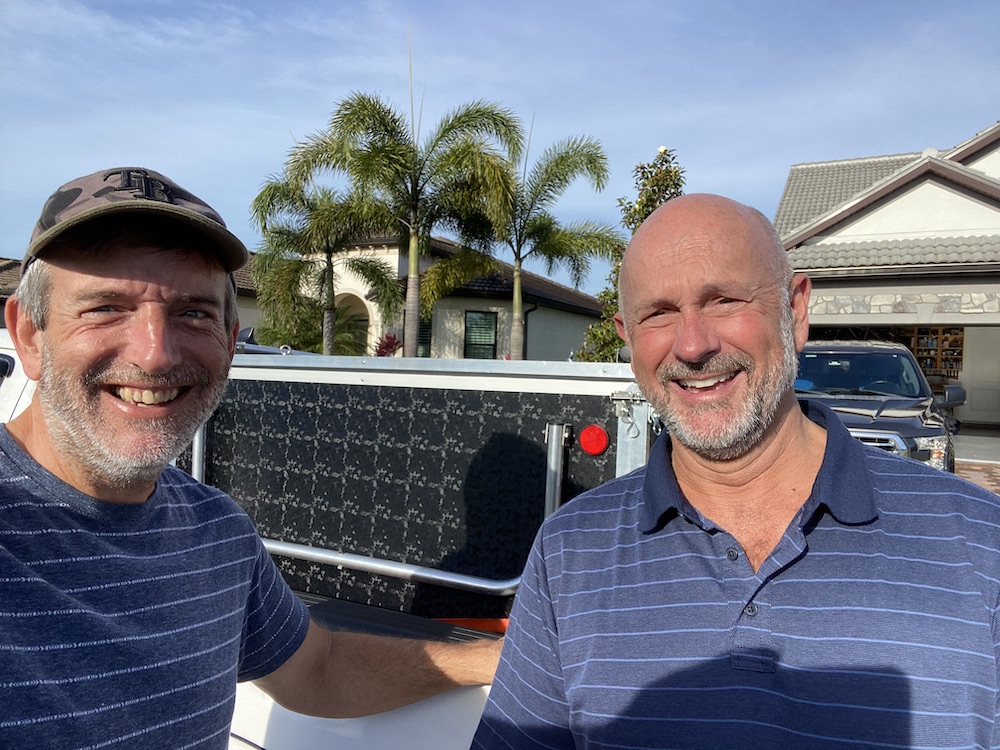Kampereen Build 4: What’s Next

It’s been a little while since I’ve done anything new on my camper projects, but that’s not for a lack for interest.
First, I had to clear some space, which meant finding a home for the latest build. Through the DIY Motorcycle Camper group on Facebook, I met Sammy Groover from Georgia who is taking Build 2 to the Peach State for some road testing and camping. Sammy has a long history of towing campers and trailers, including his own DIY teardrop camper. That made him perfect for the job of taking the Kampereen out for some long term testing in other parts of the country. I am pleased that he is willing to put it through its paces.
Second, I sell motorcycle travel stuff and this is a busy time of the year. As a one man shop, I have to do all my own product pick up, unload it, stack and count it, and put it on the shelf. I handle a few thousand parts each year and it takes a lot of time.

But, I have still been making plans, thinking about what I want to build next and getting things ready. I have secured one of the most critical pieces. I got two new sets of half axles so I would be fixed for the next two builds. This time I’m using the 935 lb rated axle stubs. I couldn’t get the 550 lb stubs. We’ll have to see how that affects the ride, but other camper makers like Time Out and Kompact Kamp use axles rated for 900 to 1100 lbs, so I think I should be fine.
For the next build, I’m going to use a frame underneath so I have been making designs and plans for this. I am not 100% convinced that a frame is required for such a light build. With almost 2,000 miles on my first frameless build, there is zero evidence of any kind of material breakdown or compromise. However, I do want other people to feel comfortable owning and towing the campers I build so I guess that’s one reason to do it. I also have an idea for a camper design I want to try that uses all aluminum framing underneath for the entire cargo box area. So as a step toward that further goal, I’ll start by making a simple frame for the next couple of builds, and work my way up from there.
To that end, I’ve added a new piece of equipment to the line-up. I’d like to welcome the Eastwood Mig 180 welder to the Open Road garage. What I like about this package is the fact that it includes a spool gun which is essential for welding aluminum. I don’t know if this frame design I have in mind will require welding, but this will be good practice.
I’ve also spent time getting more familiar with proper welding techniques and where else do you turn for info like that? YouTube, of course. I have really been enjoying a series on the “Tim Welds” channel. Tim is a professional welding inspector who does welding side jobs and shoots informative, tight instructional videos. His video on MIG welding basics is a great example. Short, organized, easy to understand, good examples.
I’ve done welding in the past and it all looked like crap. It held together, but man it was ugly. Part of the problem was the super cheap welder I was using. But mostly it was my total lack of experience and a desire to just “get ‘er done.” Thanks to TW’s channel, I’ve learned a lot about what I did wrong and how to get better results on my next project. I can’t wait to break out this new tool and start heatin’ up some metal. Maybe I’ll get a result that’s good enough to do a video about.
So now I guess it’s time to start working toward the next build, and that starts with going through the bill of materials to figure out what I have on hand and what I need to get. Since this is another experimental design, I am going to wait on making the tent and focus on the frame and cargo box, like I did with the K3 design. Like that one, I will also probably do a dry fit and assembly, then road test it. If I like the way it feels and go ahead with the tent making, I’ll disassemble everything and blueprint it, then reassemble using the final fasteners and glue. I’ll try to document more of the build process this time with pics and videos.